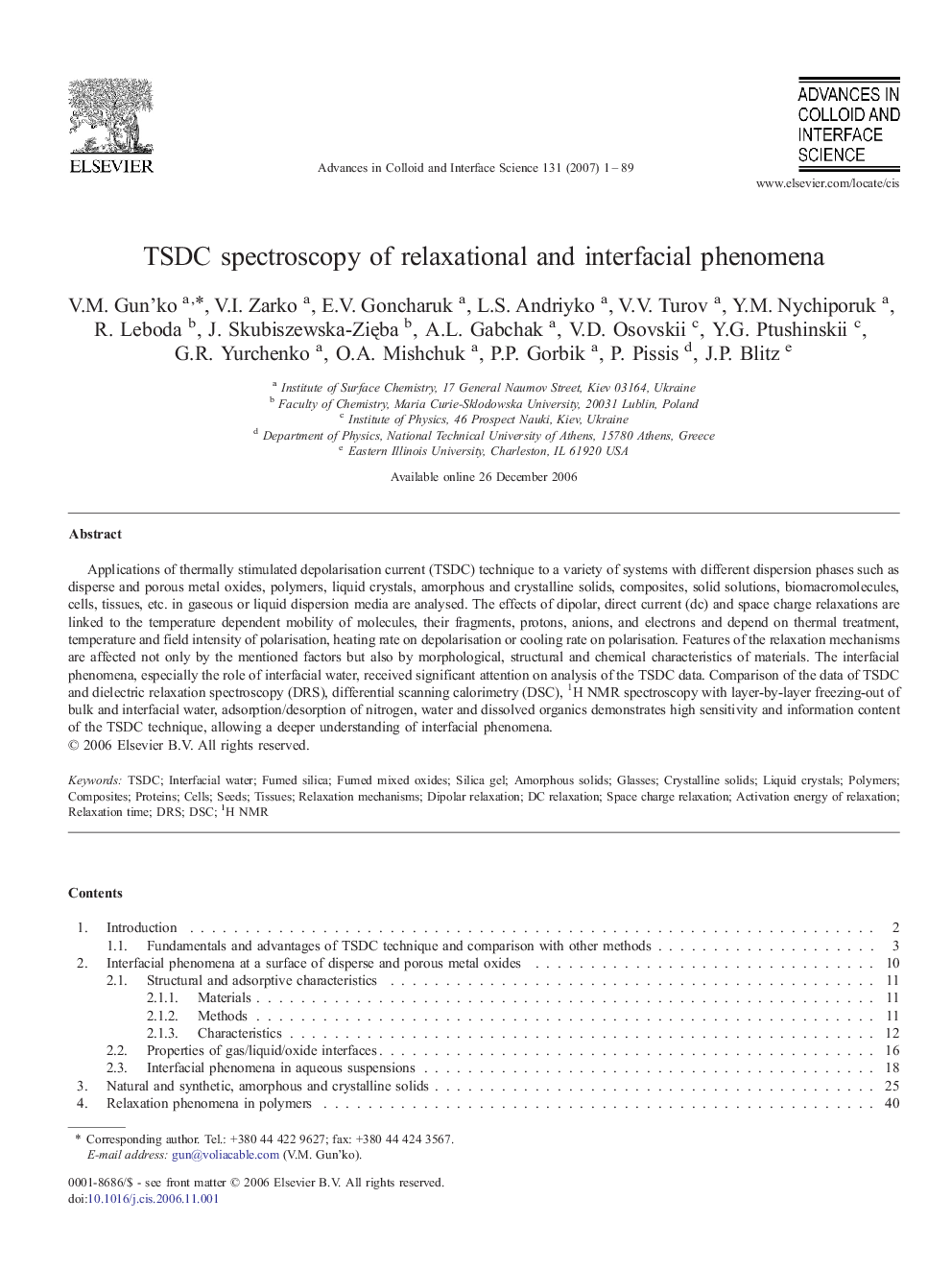| Article ID | Journal | Published Year | Pages | File Type |
|---|---|---|---|---|
| 591279 | Advances in Colloid and Interface Science | 2007 | 89 Pages |
Abstract
Applications of thermally stimulated depolarisation current (TSDC) technique to a variety of systems with different dispersion phases such as disperse and porous metal oxides, polymers, liquid crystals, amorphous and crystalline solids, composites, solid solutions, biomacromolecules, cells, tissues, etc. in gaseous or liquid dispersion media are analysed. The effects of dipolar, direct current (dc) and space charge relaxations are linked to the temperature dependent mobility of molecules, their fragments, protons, anions, and electrons and depend on thermal treatment, temperature and field intensity of polarisation, heating rate on depolarisation or cooling rate on polarisation. Features of the relaxation mechanisms are affected not only by the mentioned factors but also by morphological, structural and chemical characteristics of materials. The interfacial phenomena, especially the role of interfacial water, received significant attention on analysis of the TSDC data. Comparison of the data of TSDC and dielectric relaxation spectroscopy (DRS), differential scanning calorimetry (DSC), 1H NMR spectroscopy with layer-by-layer freezing-out of bulk and interfacial water, adsorption/desorption of nitrogen, water and dissolved organics demonstrates high sensitivity and information content of the TSDC technique, allowing a deeper understanding of interfacial phenomena.
Keywords
Related Topics
Physical Sciences and Engineering
Chemical Engineering
Colloid and Surface Chemistry
Authors
V.M. Gun'ko, V.I. Zarko, E.V. Goncharuk, L.S. Andriyko, V.V. Turov, Y.M. Nychiporuk, R. Leboda, J. Skubiszewska-ZiÄba, A.L. Gabchak, V.D. Osovskii, Y.G. Ptushinskii, G.R. Yurchenko, O.A. Mishchuk, P.P. Gorbik, P. Pissis, J.P. Blitz,
